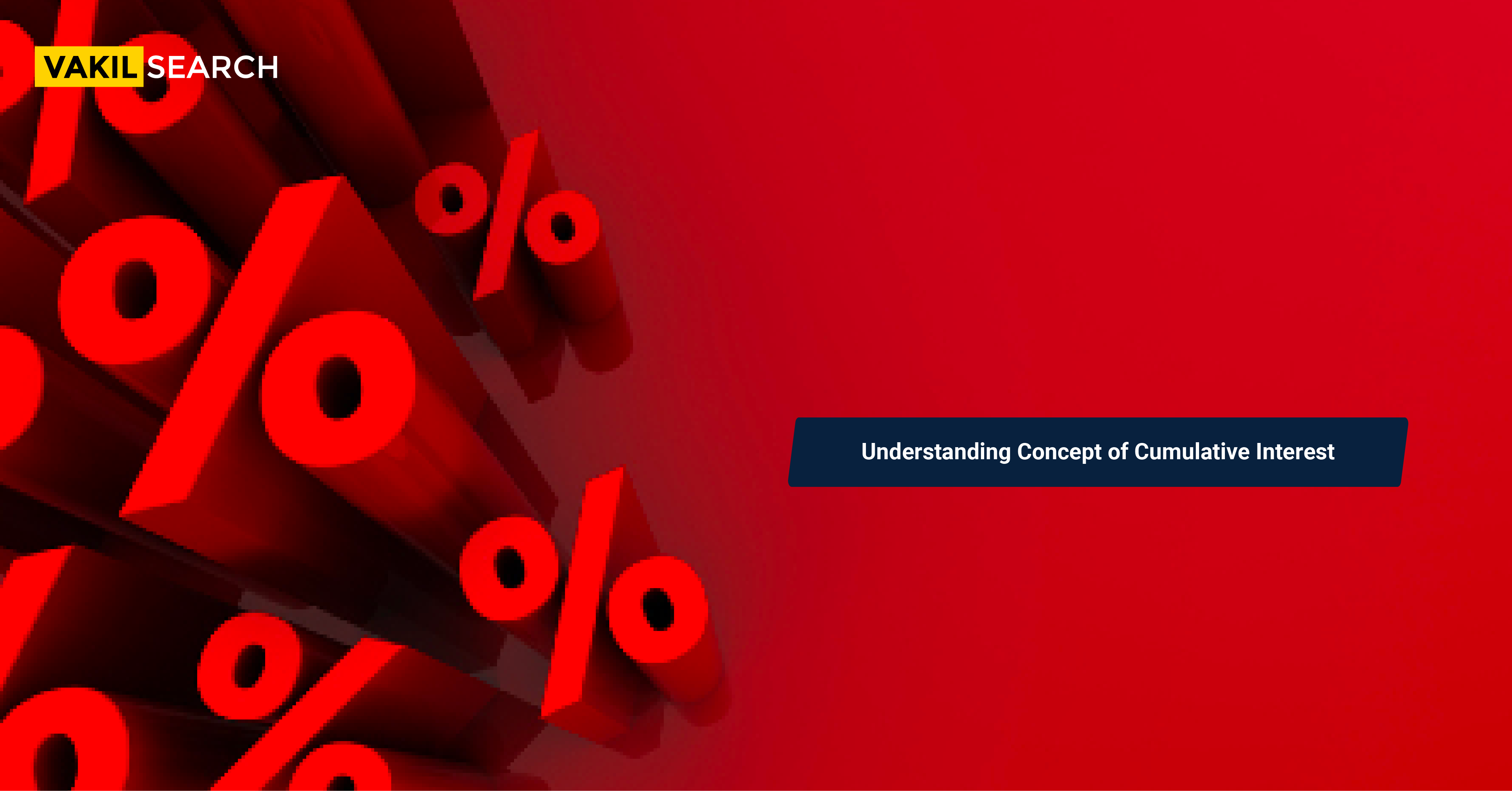Want to know more about the concept of cumulative interest? Explore its significance, practical applications, and FAQs in this straightforward guide.
Have you ever wondered how your savings account grows over time?
The answer lies in the fascinating world of cumulative interest. In this guide, we’ll unravel the concept of cumulative interest in an easy-to-read manner which will allow you to understand its importance and how it can work in your favor.
What is Cumulative Interest?
Cumulative interest is the interest that’s added to your initial investment or deposit at regular intervals, typically compounded monthly, quarterly, or annually. Unlike simple interest, where you earn interest only on your initial amount, cumulative interest takes into account the interest you’ve already earned.
Here’s a Basic Example to Illustrate the Power of Cumulative Interest:
Let’s say you invest Rs. 10,000 in a savings account with a 5% annual interest rate, compounded annually.
After the first year, you’ll earn Rs. 500 in interest (10,000 * 0.05) in the same manner as you would earn interest through simple interest.
However, with cumulative interest, the magic happens in the second year. How so? Well, in the second year, you won’t just earn interest on your initial Rs.10,000 but also on the total amount in your account, which is now Rs. 10,500 at the end of the first year.
This cycle continues, and your savings grow.
Why is Cumulative Interest Important?
Understanding the nature of cumulative interest is crucial because it can significantly impact your financial goals. Here’s why it matters:
-
Accelerated Growth
Cumulative interest allows your savings to grow faster over time, making it a powerful tool for achieving financial milestones.
-
Compound Effect:
The more frequently interest is compounded, the more your money multiplies. This exponential growth is the hallmark of cumulative interest.
-
Passive Income
As your investments accumulate interest, you can earn a passive income stream without active involvement.
-
Long-Term Goals
It’s ideal for long-term financial objectives like retirement planning, education funds, or buying a home.
-
Wealth Preservation
Cumulative interest can help your money keep pace with inflation, preserving your purchasing power.
-
Low Risk
Compared to riskier investments, cumulative interest options are typically low-risk, making them suitable for conservative investors.
How to Calculate Cumulative Interest?
Calculating cumulative interest can seem daunting, but it can be straightforward with the right help.
If you prefer to do it yourself, the formula for calculating cumulative interest is as follows –
A = P(1 + r/n)^(nt)
Where:
– A: The future value of the investment/loan, including interest.
– P: The principal amount (initial deposit or loan amount).
– r: The annual interest rate (in decimal form).
– n: The number of times that interest is compounded per year.
– t: The time the money is invested or borrowed for (in years).
To make things even easier, use Vakilsearch’s Compound Interest Calculators and online tools tp do the math for you. Simply input the values in our trusted calculator and arrive at the final amount, including cumulative interest.
Practical Applications of Cumulative Interest
Cumulative interest is not just a theoretical concept. It has practical applications in various financial instruments, such as –
- Savings Accounts: Your regular savings account often accumulates interest, helping your balance grow over time.
- Fixed Deposits: FDs offer cumulative interest options where your earnings are compounded at regular intervals.
- Loans: Understanding cumulative interest can help you choose the most cost-effective loan option, as different loans may have different compounding frequencies.
- Investment Funds: Mutual funds and other investment vehicles often use cumulative interest to grow your investments.
- Retirement Accounts: Accumulated interest plays a vital role in building your retirement nest egg.
- Education Funds: If you’re saving for your child’s education, cumulative interest can help your fund grow faster.
The Bottom Line
Cumulative interest is a financial concept that can work in your favour when you’re saving or investing. This mode of investment offers the potential for accelerated growth and is a valuable tool for achieving your financial objectives.
By grasping the information in this Comprehensive guide on the concept of cumulative interest, you can make informed decisions to secure your financial future. For any further assistance, get in touch with our experts right away!
Frequently Asked Questions (FAQs)
Is cumulative interest the same as compound interest?
Yes, the terms cumulative interest and compound interest can be used interchangeably.
Can I choose the compounding frequency for my savings account?
No, the compounding frequency for any savings account is usually determined by the bank and the type of account you hold.
What's the difference between cumulative interest and simple interest?
Simple interest is calculated only on the initial amount, while cumulative interest is calculated on both the principal and previously earned interest.
Is cumulative interest always a good thing?
The answer to this question depends on your financial goals. Cumulative interest can be advantageous for long-term investments but may not be ideal for short-term needs.
How can I maximize cumulative interest earnings?
To maximize earnings, choose investments with higher interest rates and more frequent compounding periods. Start investing early to maximize your earnings.
Are there any risks associated with cumulative interest investments?
While cumulative interest options are generally low-risk, it's essential to understand the terms and conditions of your investment or loan to make informed decisions.
Read more:-

